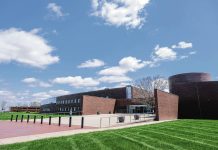Final steps are being taken toward placing an historic rural bridge into the People Trails system in Columbus next year.
A contract to hire a Columbus-based engineering consulting firm to plan and supervise reassembly of the 105-year-old former Newbern Bridge over Haw Creek has been approved by the Bartholomew County commissioners.
While the city and county are each paying $21,500 for their share of the contract with Strand Associates, the total engineering cost for restoring the bridge a few blocks south of 25th Street will be $216,000, Bartholomew County Highway engineer Danny Hollander said.
“That’s a lot of money to put into that old bridge,” commissioner Larry Kleinhenz said Monday. “But once it’s done, it will be a really nice asset.”
Eighty percent of the engineering cost, or $172,800, will be reimbursed by the federal government, Hollander said.
Barring unforeseen circumstances, construction bids are expected to be awarded in February or March, with actual work on the pedestrian/bicyclist crossing likely to get underway in April or May, Hollander said.
While $744,000 had been set aside for the entire project, as well as related trail upgrades, that amount became insufficient earlier this year due to both inflation and new flood-plain regulations requiring the structure to be erected at a higher elevation, Hollander said.
In response, approval was given in August to allocate an additional $93,112 from federal highway funds maintained by the 12-year-old Columbus Area Metropolitan Planning Organization for the relocation and renovations.
The contract is expected to allow Strand engineer and historic bridge consultant D. Eric Brunn to complete a project he began in 1999, when the commissioners first voted to replace the aging bridge after acquiring $960,000 in federal funding.
But it wasn’t until late February 2015 that the structure was lifted from its foundations over Clifty Creek near the Newbern United Methodist Church – and later moved to Lincoln Park in Columbus for storage.
Factors ranging from unexpected archeological discoveries to state funding snags were responsible for many of the delays.




